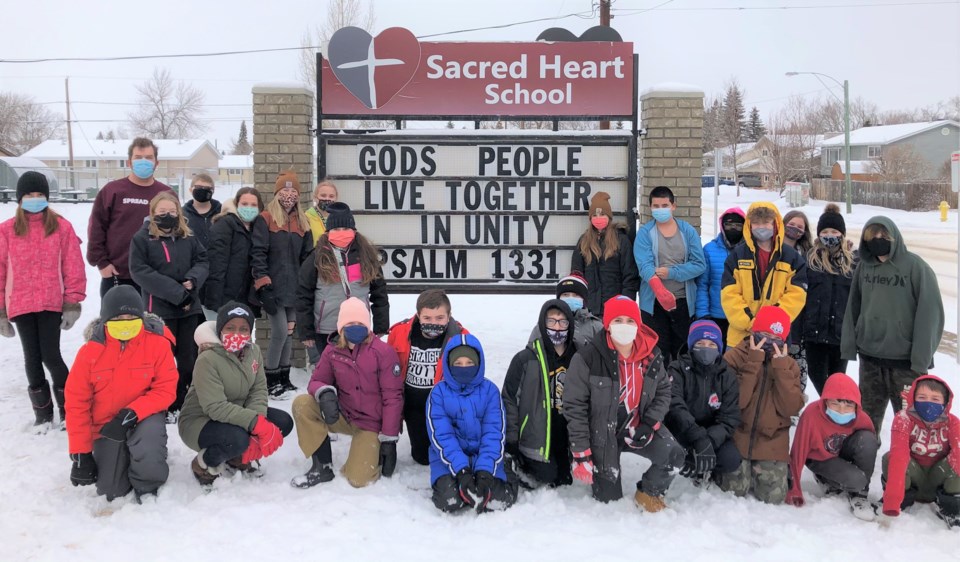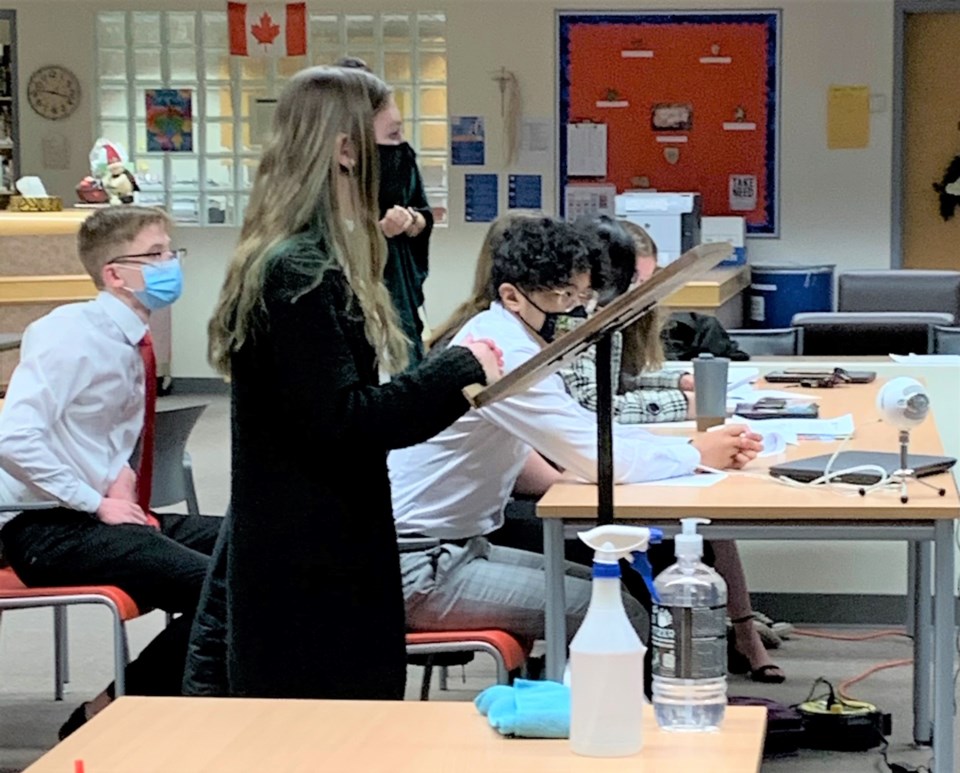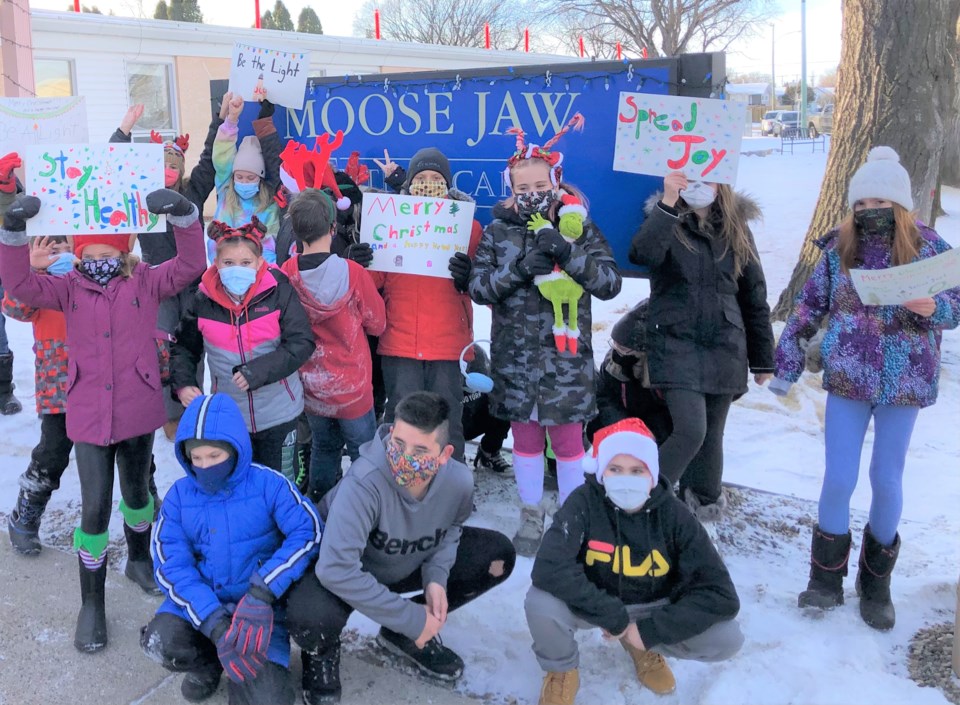The pandemic has forced the education sector to change how students are taught, but besides the pupils, teachers have also had to adjust their approach to the job.
“Teaching, it has definitely been one for the books in regards to the unique situation that students, teachers and families find themselves in,” chuckled Christa Lapointe, a teacher at Vanier Collegiate.
Making adjustments to in-class teaching has presented many new challenges, she continued. She has been pushed professionally to keep learning, while she has also had to find different ways to motivate and engage students. It has been an ongoing process for everyone, but there has been patience while finding what teaching methods work and what don’t.
Lapointe — who teaches accounting, law and entrepreneurship — is thankful that Holy Trinity Catholic School Division and the high school have given much support, including listening to concerns, providing input and lending a hand.
Online preparedness
For Janice Lamb, an educator at Riverview Collegiate, teaching in the time of COVID-19 has been unlike anything before. While she acknowledged some downsides, she has enjoyed the year and appreciates being in class with students.
Lamb was not entirely caught off guard last spring when she had to teach virtually, she said. She had been slowly moving her classes online for the past two years before the pandemic struck, so it didn’t much change how she delivered content. Luckily, she has handled well the changes made to education since September.
“They’re big changes, so there’s areas where you try something and it doesn’t work as well as you’d hoped, so you go back to the drawing board and you still try,” she remarked. “I wouldn’t say I’ve adapted over yet, but it’s been a good challenge. I’m still working through it.”
 Kyle Lichtenwald, a Grade 6 teacher at Sacred Heart Elementary School, gathers with his class outside the school. Lichtenwald is in the back row second from left. Photo courtesy Kyle Lichtenwald
Kyle Lichtenwald, a Grade 6 teacher at Sacred Heart Elementary School, gathers with his class outside the school. Lichtenwald is in the back row second from left. Photo courtesy Kyle LichtenwaldAn elementary outlook
Holy Trinity had good planning in place in September to reduce the virus’s spread, said Kyle Lichtenwald, who teaches Grade 6 at Sacred Heart Elementary.
“Masks at the beginning were challenging as we were getting used to them,” he said. “We were fortunate to have mask breaks at times throughout the day, as we were reading to self or doing activities that were not high contact. We’ve since moved to full-time masks and it’s become part of the every day.”
Students have become more conscious of washing their hands, while they also know not to come to school if they are sick, Lichtenwald remarked. Everyone has also adopted the philosophy of keeping each other safe.
“I’ve seen growth in students for caring for each other,” he added, which included writing cards to residents and staff at Extendicare at Christmas.
Blocks of classes
High schools have moved to a block system this year, which means instead of taking five one-hour classes each day, students take two classes each day that are roughly three hours long to stay together in groups and prevent outbreaks.
“It’s definitely a good thing to do in COVID when we think about contact tracing, and it was a good call to do,” said Lapointe.
In conversations with students, Lapointe found that some youths excelled with the block format while others had to adjust their thinking. Whatever students thought, however, Lapointe reminded them to do their best.
The block system has been more intense since classes are more concentrated than the semester system, said Lamb, who teaches math, English, science and senior biology. She thought it was great to finish projects in class, such as dissections during biology labs.
It’s also possible to have follow-through with students since they have more time to understand concepts.
“Every minute counts. I need to make sure I just have a good plan of what we’re going to do during the two-and-three-quarter block I have them for,” added Lamb.
Extracurricular outlook
Almost all in-person extracurricular activities have been curtailed during the pandemic. However, that hasn’t stopped some initiatives from occurring online.
Riverview’s Dungeons & Dragons club meets weekly on Discord, while the drama club hopes to start meeting via Zoom. At Vanier Collegiate, that school’s drama club has been meeting online regularly since the fall.
The fact the D&D club can meet online is a great way to build community wherever possible, noted Lamb.
Gaps in student learning
Besides the lack of intramurals in elementary schools, students cannot interact with other grades or even older friends, said Lichtenwald. They have had to remain in their “bubbles” to cut down on potential transmission.
After the interruption last spring, teachers noticed gaps in some students’ math and reading skills after returning in September. Teachers have been working diligently to ensure their pupils’ needs are met while kids are doing more work at home.
Another challenging aspect is how students can’t work in groups, which has forced them to perform more individual work.
“There’s less social skills and bonding opportunities for the students … (but) we’ll have those opportunities again,” Lichtenwald added.
 Students in Christa Lapointe's Law 30 class participate in a mock trial at Vanier Collegiate. Photo courtesy Christa Lapointe
Students in Christa Lapointe's Law 30 class participate in a mock trial at Vanier Collegiate. Photo courtesy Christa LapointeMore technology
One big change has been the full-on adoption of technology, including using Chromebooks and having more online guests. At Vanier, Lapointe normally brings speakers into her Law classes but hasn’t been able to do that. However, one recent speaker gave the students a virtual tour of the Supreme Court of Canada.
“So we connected with more professionals in my Law class than we might have in other years,” she added. “That was kind of unique … .”
New opportunities
Lichtenwald has also been unable to bring in in speakers; he thought virtual guests weren’t the same as in-person. Furthermore, he can’t take his students on field trips to places such as Buffalo Pound Lake or Wakamow Valley.
“The pandemic has emphasized how important schools are and how important student-teacher relationships are … ,” he added. “We saw difficulty with the online in the spring, and we’re just thankful to be here.”
This time has created more opportunity to spread a message of kindness and compassion, said Lamb. She has also spent time calming people and making them feel safe while also reminding students about proper hygiene.
“The school smells really great,” she added, “because the cleaners they use are fantastic.”




